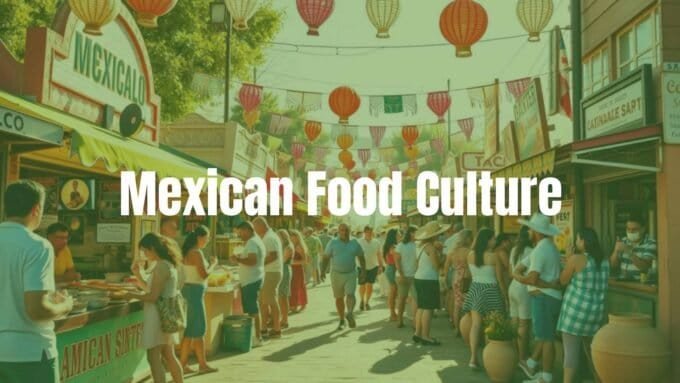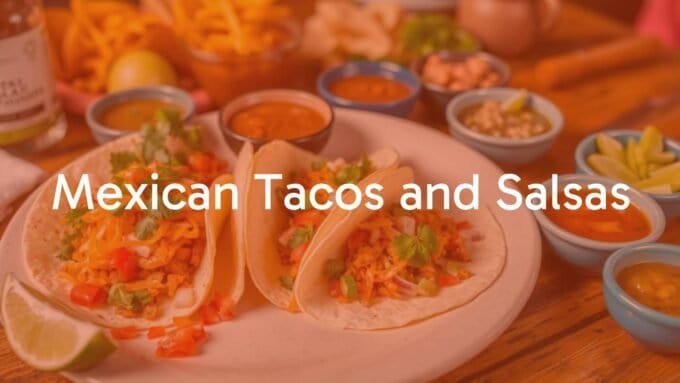Vegetarian Mexican dishes are colorful, full of flavor, and show off Mexico’s long food history-just without meat. Plant-based meals have been part of Mexican cooking for hundreds of years, well before the Spanish arrived. While many Mexican meals often come with meat these days, essential foods like corn, beans, and squash-often called the “three sisters”-are naturally vegetarian and go back to ancient times. With lots of different textures, tastes, and fresh ingredients, these foods are proof that Mexican food can be filling and exciting even without meat.
One of the best things about vegetarian Mexican food is how many different meals you can make with simple, easy-to-find ingredients. Everywhere from Mexico City’s street food stalls to home kitchens in small towns, you’ll find many vegetarian and even vegan options made in both new and traditional ways. This style of cooking celebrates Mexico’s roots and shows that old ingredients like corn and beans are just as popular now as they were hundreds of years ago.
Main Ingredients in Vegetarian Mexican Cooking
The basics of vegetarian Mexican food rely on a few simple, powerful ingredients. Corn (used for tortillas and dough called masa) is the most important. Beans-black and pinto especially-are found in most dishes and add protein and fiber. Squash (calabacitas), bell peppers, onions, tomatoes, and chiles make the meals colorful, fresh, and healthy. These basic foods are combined with spices such as cumin, chili powder, paprika, and oregano to get that classic Mexican flavor.
Other favorites like avocados (for guacamole), different cheeses (such as cotija or Oaxaca cheese-there are vegan versions too), and fresh herbs like cilantro make dishes even better. Tomatillos are key for green salsa, and nopales (cactus) bring a special taste and texture. Lentils and mushrooms are used more and more as meat replacements in tacos and stews. When these ingredients come together, you get filling and flavorful vegetarian Mexican dishes.

Regional Styles in Mexico
Vegetarian Mexican cuisine changes a lot by region. Every state has its own versions and ways of making plant-based meals, usually based on what grows nearby and local food traditions. In Oaxaca, for example, you’ll find Tetelas-masa triangles stuffed with black beans and cheese, cooked on a griddle. In Puebla, you’ll see something similar. Central Mexico uses more corn dishes and adds extra vegetables to stews. In the north, where people have a ranching background, meat is common, but beans and vegetable sides still play a big part. Coastal areas use more fruits and sometimes seafood, but you’ll find refreshing fruit salsas and salads too. As a result, eating vegetarian Mexican food means you can discover new flavors and styles in each part of the country.
Health Benefits and Nutrition of Vegetarian Mexican Dishes
Choosing vegetarian Mexican food isn’t just an adventure for your taste buds-it’s also good for your health. These meals are usually packed with ingredients that are high in nutrients, fiber, vitamins, and minerals, and they’re often lower in fats and cholesterol than similar dishes with meat. The bright colors of these foods mean you’re also getting lots of antioxidants, which are great for overall health.
Cooking methods like roasting vegetables or simmering beans slowly let flavors come out and help your body use more of the nutrients. Plus, since foods like beans, corn, and vegetables are affordable and easy to find, vegetarian Mexican food can be a simple and healthy choice for everyone.

Where Does the Protein Come From?
People often ask, “How do you get enough protein on a vegetarian diet?” In Mexican food, the answer is easy: beans, lentils, and seeds. Black beans and pinto beans are always in the kitchen, bringing a lot of protein and fiber to tacos, enchiladas, and more. For example, a skillet meal with black beans and quinoa can give you up to 28g of protein per serving.
Lentils are another good protein source and work well in taco and burrito fillings or even as a main part of a dish. Quinoa (which is actually a seed, not a grain) is also a complete protein and great in bowls or salads. Pumpkin seeds (pepitas) and chia seeds can be sprinkled over food to boost protein and healthy fats. Using a mix of these ensures vegetarian Mexican food is both tasty and filling.
Vitamins and Minerals from Vegetables and Herbs
The many colors in vegetarian Mexican dishes aren’t just nice to look at-they show a range of vitamins and minerals. Dark green spinach and cilantro, red bell peppers and tomatoes, yellow and orange squash and corn-all bring their own health benefits like vitamin C, vitamin A, and potassium.
Fresh herbs, especially cilantro, do more than decorate the plate; they add flavor and more nutrients. Chiles provide capsaicin, a compound linked to health benefits. Even the spices-like cumin and oregano-help reduce inflammation and can support digestion. With all these fresh and colorful ingredients, vegetarian Mexican dishes truly help you eat healthier.
Myths About Plant-Based Mexican Food
Vegetarian Mexican food sometimes gets misunderstood. Some think it’s boring or “missing” the meat, but that’s not true. Slow-cooked beans, roasted vegetables, and spicy salsas offer deep flavor without needing any meat. The real taste comes from careful seasoning and traditional cooking.
Some also believe all Mexican food is unhealthy because of frying or heavy cheese. While you can find rich dishes, most vegetarian Mexican recipes focus on fresh veggies, beans, and whole grains, making them healthier. Many plant-based options were common long before vegetarianism became popular elsewhere. Today, both old and new, the vegetarian style is loved for its wholesome, natural approach.
Popular Vegetarian Mexican Dishes To Try
Vegetarian Mexican cooking includes a huge variety of dishes-from saucy comfort foods to crispy snacks-that everyone can enjoy. Many are naturally vegetarian, and others can be easily made without meat, showing just how flexible Mexican recipes are. Whether you already avoid meat or you just want more veggie meals, the dishes below are a solid place to start.
These foods have a nice mix of fresh and hearty elements. You’ll find hot cheesy dishes and crunchy, cool salads. Trying different toppings and fillings lets you make these recipes your own.

Enchiladas, Enfrijoladas, and Entomatadas
Enchiladas are corn tortillas stuffed and rolled with a filling, then covered in chili sauce and baked. They often have meat in restaurants, but they are just as good without it. Stuff yours with beans, vegetables, and cheese, cover with mild or spicy sauce, and bake. Homemade sauces can be simple and tasty.
Enfrijoladas use a creamy bean sauce over filled tortillas. They have a different taste and texture, often with cheese or vegan cheese and plenty of beans. Entomatadas are similar to enchiladas but use a fresh tomato sauce instead of chili sauce. All three meals show how tortillas and sauces can come together in satisfying vegetarian ways.
Tacos: Fillings from Squash to Mushrooms
Tacos are probably the best-known Mexican food, and they’re easy to make vegetarian. Fillings can be anything you like-from squash (calabacitas) and corn to mushrooms that give a “meaty” texture. Mushroom tacos can stand in for classic meat fillings, while black bean and potato, sweet potato, buffalo cauliflower, and lentil tacos are other popular choices. Choose your tortilla, pack it with veggies and beans, then top with salsa, guacamole, or hot sauce for an endless variety of taco experiences.
Vegetarian Chiles Rellenos and Chiles en Nogada
Chiles Rellenos are poblano peppers roasted, peeled, stuffed (usually with cheese), dipped in egg batter, and fried. They’re often served with tomato sauce and sides like beans and salad. For parties, you can make chiles rellenos squares for easy serving.
Chiles en Nogada is a special-event dish showing the Mexican flag’s colors: green chile, white walnut sauce, and red pomegranate seeds. The original recipe uses a meat filling, but lentils make a great vegan version that’s just as flavorful, thanks to spices and fruit in the mix. Both dishes are classic and can be made fully vegetarian or vegan.
Sopes, Tostadas, and Tetelas
Sopes are thick, handmade corn tortillas with raised edges that hold beans, cheese, lettuce, salsa, and vegetables. They can be fried or not and are easy to customize.
Tostadas are flat, crispy corn tortillas. Tostadas de frijoles (beans) are a classic, usually topped with avocado, salsa, and chopped veggies. There are also versions with sweet potato, chickpeas, or squash, all offering crunchy and fresh combinations.
Tetelas come from Oaxaca and Puebla. These triangle-shaped pockets use masa dough, are filled with beans and cheese (or vegan substitutes), then folded and cooked until brown. Served with salsa or cream, they are simple and satisfying.
Soups: Sopa de Lentejas and Vegan Pozole
Soups are also big in Mexican cuisine. Sopa de Lentejas is a lentil soup with vegetables, full of protein and comfort. Pozole is a traditional soup, usually with hominy and meat. Vegetarian or vegan versions use mushrooms for richness and bright green or clear broths, then finish with cabbage, cilantro, and lime for extra flavor and crunch. These soups are warm, filling, and perfect for cooler days.
Quesadillas, Taquitos, and Burrito Ideas
These classic finger foods are easy to make vegetarian. Quesadillas are simply cheese melted in tortillas, often with black beans, spinach, pumpkin, or corn. For breakfast or a bigger meal, combine them with eggs.
Taquitos are rolled tortillas filled and then baked or fried. Vegetarian taquitos can have potato, black beans, or jackfruit for a satisfying bite. There’s a debate about their origin-Mexico or California-but either way, they’re tasty.
Burritos can be packed with beans, rice, veggies, or lentils for a hearty, hand-held meal. Try bean burritos, rice and corn fillings, or vegan options using plant-based cheese and sour cream. Burritos are also easy to make ahead for busy days and can be served with a variety of toppings for extra flavor.
Mexican Salads, Salsas, and Street Corn
Vegetarian Mexican meals are also famous for their salads and small bites. Mexican salads use beans, bright dressings, avocado, and lots of vegetables-try a kale salad with cumin and lime, or a black bean and mango salad. They’re crisp, fresh, and a nice balance to heavier dishes.
Salsas are everywhere, from pico de gallo (chopped tomato, onion, and cilantro) to salsa verde or smoky roasted veggie salsa. Salsa brightens every meal and is quick to make fresh at home. Guacamole-avocado, lime, onion, and tomato mixed together-is a favorite dip or spread.
Elote (Mexican street corn) is corn on the cob, usually grilled, then covered with chili-lime mayo, cheese (or vegan cheese), and sometimes an avocado cream. You can even bake it as a casserole. Simple, fresh ingredients turn into memorable street food.
Cooking Tips and Easy Ingredient Swaps
Cooking vegetarian Mexican food can be really fun and rewarding. The key is using fresh ingredients and knowing some helpful tips and substitutions. Even if you’re new to these dishes, you can make meals with full flavor and authentic taste. The aim is to layer flavors to make every bite just as exciting as the original recipes with meat.
Feel free to experiment or change things to your liking. Mexican cooking is very flexible, and knowing some quick substitutes lets you adapt recipes for different tastes or allergies-and to use what you already have at home.
Getting Flavor Without Meat
Great vegetarian Mexican dishes rely on building flavor from scratch. Start by frying onions and garlic until they smell good-this is an important step that adds sweetness and depth. Spices like cumin, chili powder, and oregano are must-haves for the right taste. Toasting them before using makes them even stronger.
Roast veggies like bell peppers and potatoes to bring out their sweetness and add a smoky note. Roasted chiles work well in almost any sauce or filling. Use vegetable broth to add a savory background, especially in soups or for cooking beans. Finish by adding fresh things like lime juice, cilantro, or salsa to brighten up the dish. Let your beans or stews simmer slowly to let all the flavors come together.
Easy Vegan Swaps for Dairy
If you want to go fully vegan, switching out dairy is easy now that there are so many options. Look for vegan cheeses that melt, such as plant-based cheddar, Jack, or Oaxaca style. These work well in quesadillas, tacos, or as a topping.
For creamy toppings, use plant-based sour cream (made from cashews, tofu, or coconut) or make your own cashew cream with lime for flavor. Many canned refried beans are now made with vegetable oil instead of lard, but check the label to be sure. If you make beans at home, just use oil. For Mexican rice, swap chicken broth for vegetable broth so it stays totally plant-based.
Making Homemade Tortillas and Salsas
Good tortillas and salsas are the foundation of many Mexican dishes. Making your own at home gives better results than store-bought. Homemade tortillas (corn or flour) need just a few ingredients and a little practice, but they make a big difference for tacos and enchiladas.
Fresh homemade salsas, from pico de gallo to salsa verde or fire-roasted mixes, are tastier and let you control the spice. They brighten up all vegetarian Mexican plates. Sometimes, the simplest little things, like a fresh tortilla or zesty salsa, make the meal unforgettable.
Basic Tools for Cooking
Cooking vegetarian Mexican food doesn’t need fancy equipment, but some tools help a lot. A heavy skillet or a flat griddle (comal) cooks tortillas, roasts veggies, and gives food a smoky flavor. A good blender or food processor can help with salsas, sauces, and even refried beans. Use a mortar and pestle (molcajete) to crush spices and make salsas, though you can use a bowl and fork if needed. Usual tools like sharp knives, cutting boards, and measuring cups are all you need for most recipes. For baking, a sturdy oven-safe dish is helpful for casseroles like enchiladas. With a few basic tools, you can make great-tasting, traditional dishes.

How to Serve and Plan a Vegetarian Mexican Meal
Preparing a vegetarian Mexican meal isn’t just about the food-it’s also about making a tasty and beautiful meal that brings people together. Whether you’re cooking for a busy weeknight or for company, thinking about serving and planning can take your meal to the next level. Mix up textures and tastes: pair soft with crispy, mild with spicy, or rich with crisp salads. Mexican food is made for mixing, so it’s easy to set up a menu with variety and excitement. Bright garnishes and colorful sides make everything look even tastier.
Combining Dishes for a Full Plate
To make a complete vegetarian Mexican meal, try mixing dishes with different tastes and textures. For example, if your main course is heavy and saucy (like enchiladas), serve it with a light, crunchy salad like a kale salad or fresh corn salsa. The crispness of the salad balances out the richer main.
For tacos, offer more than one filling (such as mushrooms and squash) with different toppings so people can make their own combinations. Soups like vegan pozole are best with garnishes such as shredded cabbage, radishes, and lime. A strong black bean dish pairs well with light, fresh sides to build a meal that’s both hearty and refreshing.
Menu Ideas for Families and Parties
Vegetarian Mexican food is great for families or bigger groups. For family dinners, try a taco or burrito bar-set out tortillas, a couple of veggie fillings (like spicy potatoes or lentils), salsa, cheese, lettuce, and guacamole so everyone can build their own plate. It’s fun and lets everyone pick what they like.
For guests, choose dishes that impress on the table as well as in taste. Chiles en Nogada is beautiful and special, especially in its vegan form. Tetelas make great appetizers, and a big tray of vegetarian nachos or a bean enchilada bake feeds a crowd. Cool drinks like agua fresca (fruit and water, like hibiscus and lime) are a great match for spicy food, and you can even turn them into popsicles for dessert. Mexican food is naturally social and perfect for sharing at a gathering.
Common Questions About Vegetarian Mexican Food
As more people discover vegetarian Mexican food, some questions come up again and again. Here are some clear answers to help you make choices-at home or out-about what is genuinely vegetarian and how dishes are prepared.
Are Traditional Refried Beans Vegetarian?
This is a frequent question. In Mexico, refried beans (frijoles refritos) are often cooked with pork lard for flavor and texture, which means they are not vegetarian. However, most canned refried beans in the US and UK are made with vegetable oil, not lard. Always check the ingredients on the can. If you’re at a restaurant, ask if they use oil or lard. Making beans at home gives you full control so you can be sure they’re vegetarian or vegan.
Is Mexican Rice Vegetarian?
Traditional recipes often make Mexican rice with chicken broth for a savory taste, so it’s usually not vegetarian unless specified. But you can easily use vegetable broth instead. At home or in restaurants that offer vegetarian options, it’s common to use veggie broth so everyone can enjoy it. When buying pre-made rice or eating out, ask about the broth if you’re avoiding animal products.
What Are Some Authentic Vegetarian Mexican Dishes?
Many Mexican foods are naturally vegetarian or have been for centuries, since the base of the cuisine is corn, beans, and squash. Here are some classic vegetarian dishes:
- Chiles Rellenos: Poblano peppers stuffed with cheese and fried.
- Elote (Mexican Street Corn): Grilled corn on the cob with mayo, cotija cheese, chili powder, and lime (swap for vegan versions as needed).
- Sopa de Lentejas: A filling lentil soup.
- Tetelas: Masa triangles filled with beans and cheese from Oaxaca and Puebla.
- Calabacitas con Queso: Squash and corn cooked with cheese.
- Guacamole: Avocado-based dip with lime and onion.
- Salsas: Most, such as pico de gallo or salsa verde, are vegan.
- Enfrijoladas: Tortillas dipped in bean sauce.
- Tostadas de Frijoles: Crispy tortillas topped with beans and vegetables.
Even if some dishes originally used meat, the way they’re made means you can keep them authentic and tasty as vegetarian meals. Mexican plant-based cooking is rich in options, flavor, and tradition-making it great for anyone wanting to eat more vegetarian food.














Leave a comment